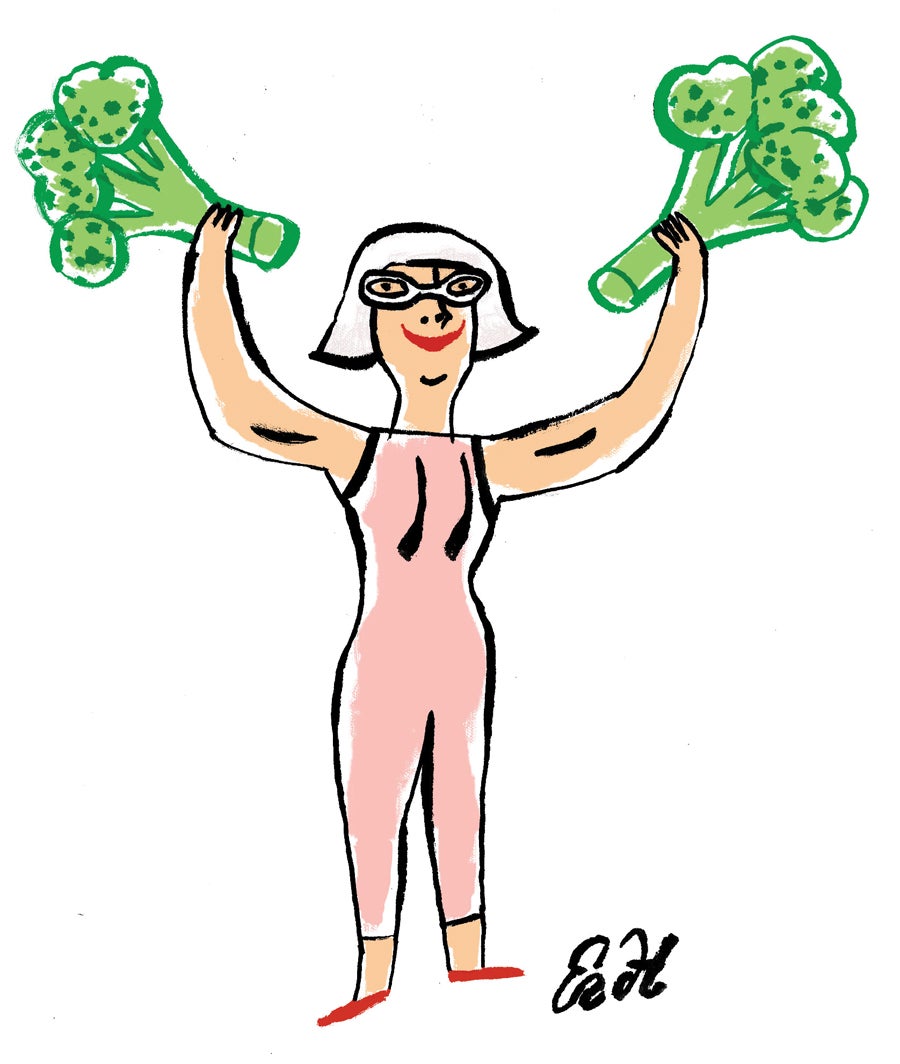Bone Up

Q: Is it inevitable that our bones weaken as we age?
A: Some bone loss is natural as the years go by. But if you develop osteoporosis and it worsens, you risk suffering a fracture. It’s not just that your bones are losing calcium and other minerals; in osteoporosis, the bone tissue itself is deteriorating.
Fortunately, diet and exercise make a huge difference, and these habits are under our control.
Q: How much calcium do I need?
A: Less than you might think. While the recommended dietary allowance is 1,000 milligrams per day for young adults and 1,200 milligrams for women over 50 and men over 70, research tells a different story. A study of 61,433 women published in the British Medical Journal showed little benefit to consuming more than about 750 milligrams of calcium per day.
The most healthful calcium sources are beans and leafy green vegetables, because they pack in so many other nutrients. Among the greens, broccoli, kale, collards, and Brussels sprouts provide highly absorbable calcium; the calcium in spinach, however, is poorly absorbed.
The role of dairy products in osteoporosis has been controversial ever since the Nurses’ Health Study—which followed 72,337 women for 18 years—showed that milk did not in fact prevent fractures. Women who drank three or more glasses of milk per day had just as many hip and arm fractures as those who consumed little or no milk.
In order to absorb calcium, you need vitamin D. About 15 minutes of sunlight on your face and arms each day produces the amount of vitamin D required. If you’re avoiding the sun or using a sunscreen, you’ll need to take a supplement.
The recommended dietary allowance of vitamin D for adults is 600 IU (15 micrograms) per day, or 800 IU (20 micrograms) if you’re over 70. But because vitamin D also seems to have a cancer-preventive effect, many health authorities now advise a higher intake, up to around 2,000 IU (50 micrograms) per day.
Q: Is there anything in my diet that could be weakening my bones?
A: If you were to load up your plate with chicken, fish, beef, or any other source of animal protein, your kidneys would quickly start to lose calcium. Animal protein tends to escort calcium from the bloodstream, through the kidneys, into the urine. In an extreme case, a high-meat-intake diet can increase calcium loss by more than 50 percent. This could help explain why milk does not seem to prevent fractures: while milk does provide calcium, it also contains animal protein, which can encourage calcium loss.
Salty foods increase calcium loss as well. The more sodium there is in the foods you eat, the more calcium your kidneys expel from your body. When they’re picked from the garden, green beans, cauliflower, and tomatoes have almost no sodium at all, so fresh and frozen varieties are fine. But canned vegetables, soups, and sauces often harbor added sodium. It pays to look for no-salt-added varieties. Potato chips, pretzels, and similar snack foods are loaded with salt, as are most processed cheeses and meats, including bacon, salami, sausage, and cured ham. It makes sense to keep your sodium intake below about 1,500 milligrams per day.
Caffeine probably does not contribute to fracture risk, unless you have more than about three cups of coffee per day. Beyond that point, make it decaf to avoid calcium loss.